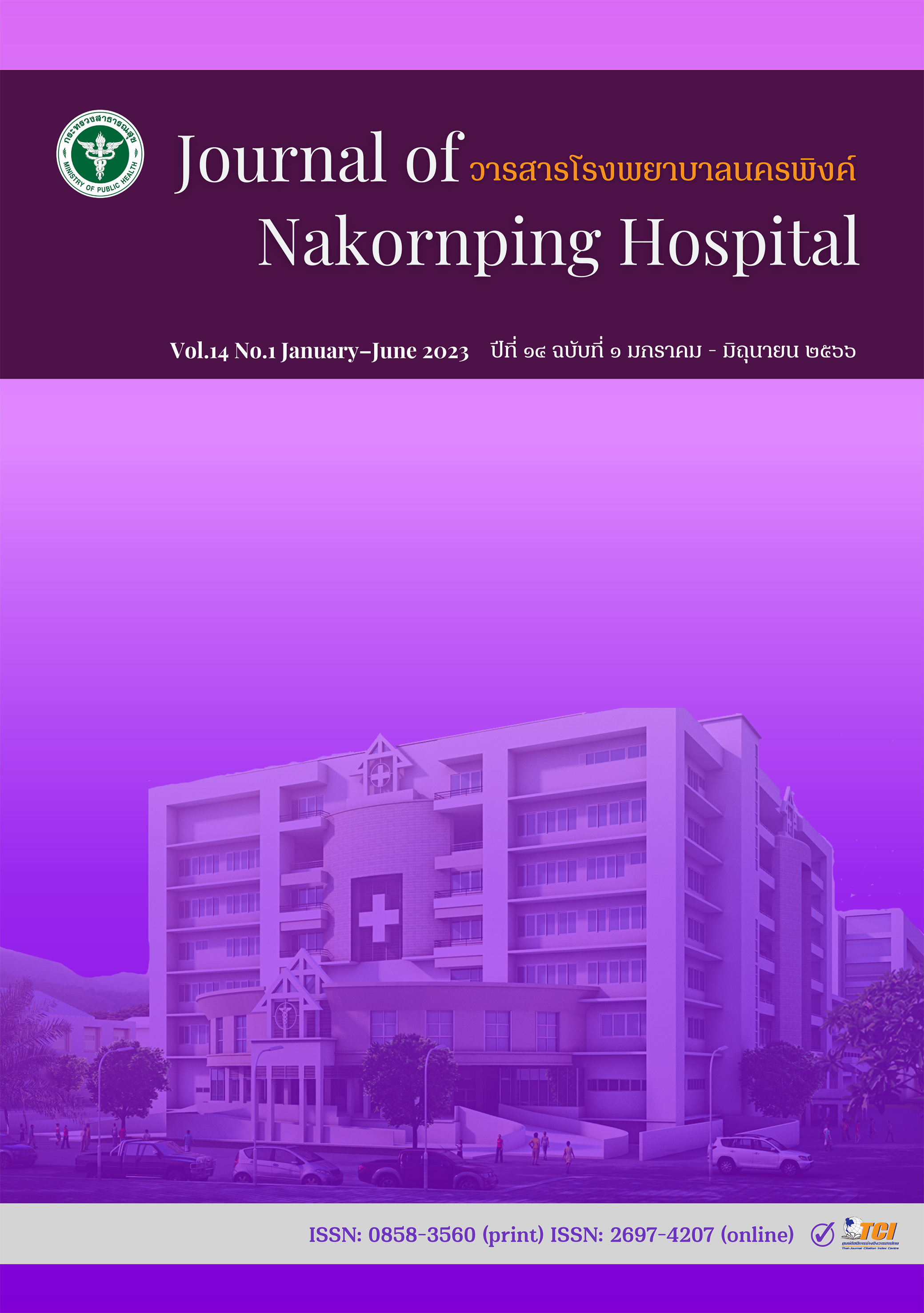Developing a model for emergency patient transfer services in remote area with the participation of com-munity networks: A Case Study of Omkoi district, Chiang Mai Province
Keywords:
developing model, emergency patient transfer, remote area, community networks participationAbstract
This research aimed to develop a model for emergency patient referral services in remote areas through collaboration among network partners. It was a research and development project conducted in the Omkoi district of Chiang Mai province during 1st July 2021 – 30th June 2022. The study was divided into three phases. Phase 1 was a situational analysis, which involved collecting qualitative data through interviews with healthcare personnel and network partners who had experience with patient referrals. This also included gathering secondary data from Omkoi Hospital and Omkoi District Public Health Office. Phase 2 involved developing the model for emergency patient referral services, which included creating a training curriculum to enhance the capacity of community health workers in providing emergency patient referral services. Phase 3 was the evaluation process, which involved testing and training community health workers using the developed curriculum. Additionally, the developed emergency patient referral transfer protocol was tested through simulation exercises.
Results: The outcome of Phase 1 found that patient referral times were longer than normal due to difficult transportation and communication issues. The network of support from the community was limited. In Phase 2, based on this information, we developed two models of emergency patient referral systems: transfer by car and by air ambulance. We also created a capacity development curriculum for community health workers to improve their abilities in transferring emergency patients. During the evaluation phase, we used the developed curriculum to train community health workers who work in the Omkoi district. The results showed that the scores after training were higher, and the difference in scores before and after the training was statistically significant (t=-8.5, p<0.001). Regarding the implementation of the emergency patient referral model, it was found that the operational plans and responsibilities to support the transfer of emergency patients were successfully carried out.
Conclusion: Therefore, the emergency patient referral service model developed through collaboration among the network community can be applied. However, it is important to increase the knowledge and capabilities of network partners because, in emergency situations, providing assistance to patients and reducing referral time are crucial to saving lives and improving quality of life.
References
Phinyo S, Yamroj T, Kerdkaew K, Srisakorn K. Perception and Expectation of Emergency medical Services by Patients and Relatives Emergency and Accident Patient Phrachomklao Hospital, Phetchaburi Province [Internet]. Phetchaburi: Phrachomklao Hospital; 2011. Available from: https://www.niems.go.th/1/upload/migrate/file/20111203123821.pdf [In Thai]
Phonsaen K, Wachiradilok P, Sirisra T, Prasamrerk N. The situation and the factors that affect the use of emergency medical services at the emergency department of patient emergency in Thailand. Non-thaburi: National Institute for Emergency Medicine; 2016. [In Thai]
Omkoi District Public Health Coordinating Committee. Supervision Presentation Document, Omkoi Hospital. Chiang Mai: Omkoi Hospital; 2021. [In Thai]
Chiang Mai Provincial Public Health Office. Community health worker manual 2019. Chiangmai: Chiang Mai Provincial Public Health Office; 2020. [In Thai]
Omkoi Hospital. Summary of patient referral results 2019-2020. Chiangmai: Omkoi Hospital; 2021. [In Thai]
Chiang Mai Provincial Public Health Office. Policy and Promoting for public health development in Chiang Mai Province. Chiang Mai: Chiang Mai Provincial Public Health Office; 2021. [In Thai]
Sindhu S, Konggumnerd R, Wiwattanacheewin K. A Study of Factors Related to Emergency Medical Service of Professional Nurses. The Journal of Boromarajonani College of Nursing, Nakhonratchasima. 2014;20(2):32-45. [In Thai]
Rojhprasert S, Adivadhanasit C, Kanlayanamit P. Approach to development of pa-tient referral systems for medical treatment, Public Health Inspection region 2, Ministry of Public Health. VRU Research and Development Journal Science and Technology. 2013;8(3):88-100. [In Thai]
Kuttiyavitayakul S, Leelayana N. Development of a Structural Model for the Health Referral System:Case Study of Nakhon Ratchasima Province. Journal of Public Health. 2014;44(2):189-98. [In Thai]
Sangin T, Odklun P, Srinak N. The Development of One Stop Service in Emergen-cy Referral System, Nakhon Phanom Hospital. Nakhonphanom Hospital Journal. 2021;8(2):94-104. [In Thai]
Downloads
Published
How to Cite
Issue
Section
License
Copyright (c) 2023 Nakornping Hospital

This work is licensed under a Creative Commons Attribution-NonCommercial-NoDerivatives 4.0 International License.
The articles that had been published in the journal is copyright of Journal of Nakornping hospital, Chiang Mai.
Contents and comments in the articles in Journal of Nakornping hospital are at owner’s responsibilities that editor team may not totally agree with.



